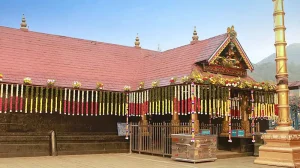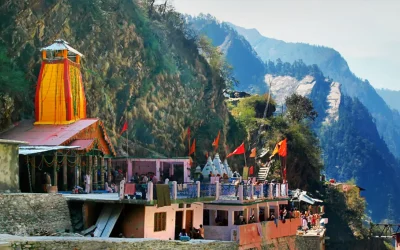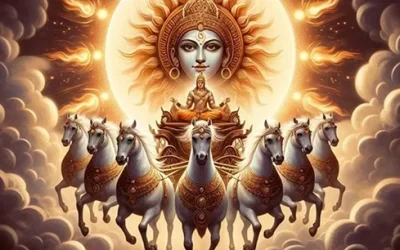Sabarimala Temple: A Spiritual Journey Through Faith and Nature
Have you ever thought of embarking on a journey to strengthen your faith and devotion while being immersed in the natural beauty of the Western Ghats? Come and visit the Sabarimala temple in the village of Ranni-Perunad, Pathanamthitta district of Kerala, a place of spirituality and the grandeur of nature. The temple is dedicated to Lord Ayyappa and attracts millions every year, offering an experience that’s as challenging as it is transformative.
Interesting History of Sabarimala
It is believed that one of the five temples was made by Lord Parasurama, the avatar of Vishnu. Over centuries, it transformed from a secluded meditating place for sages to one of the world’s largest annual pilgrimage destinations.
After the killing of the demoness Mahishi, the legend says that Prince Manikandan of the Pandalam dynasty, Lord Ayyappa’s avatar, meditated there. So, this place is called Manimandapam—the sanctum sanctorum of the present temple, which was again rediscovered in the 12th century by the Tamil king Rajasekhara Pandiyan, and since then, become a symbol of unity, faith, and resilience.
Legends That Inspire Devotion
Do you know the story of the divine origins of Lord Ayyappa? He is said to be the child of Lord Shiva and Mohini, the female form of Vishnu. Born to defeat Mahishi, he embodies bravery, worship, and harmony. The purpose and sacrifice attributed to his divine birth remind devotees and inspire them to undertake the pilgrimage to Sabarimala.
The temple is also believed to be associated with Rama of the Ramayana. It is said that there used to be a tribal devotee of Rama known as Shabari, who was an exemplary of faith, devotion, and simplicity.
The Holy Pilgrimage of Sabarimala
Would you like to embark on a journey that requires 41 days? That’s exactly what every pilgrim to Sabarimala does. The 41-day Sabarimala pilgrimage, known as the Mandala season, starts on the first day of Vrischika month (Scorpio) and concludes on the 11th day of Dhanu month (Sagittarius) in the Malayalam calendar, aligning with December and January.
Known as Vratham, this preparatory period involves abstinence, vegetarianism, daily prayers, and wearing simple black or blue attire. Pilgrims carry the irumudi kettu, a sacred bundle of offerings, on their heads—a symbol of surrender and devotion.
The trek is physically and spiritually demanding because it crosses over a 5 km climb from Pamba through hillocks and a serene landscape. Landmarks passed along the way, such as Neelimala, Appachimedu, and Saramkuthi, add spiritual value to the expedition.
At the end of the trek lies the Pathinettampadi—the sacred 18 steps leading to the sanctum sanctorum. These steps symbolize the 18 hills surrounding Sabarimala and represent virtues that every pilgrim must embrace. Can you imagine the sense of fulfilment upon reaching the top and seeing Lord Ayyappa’s idol? It feels wonderful.
Makara Jyothi and the Magic of Mandala Pooja
If you visit during the Mandalam-Makaravilakku season, you’ll witness the most celebrated event at Sabarimala. This is for 41 days and ends in January; millions of devotees flock to this festival. The highlight: the Makara Jyothi—a divine celestial light on the horizon. For most people, the Makara Jyothi is a moment of divine spiritual awakening.
A Haven of Natural Beauty
Sabarimala is not just a pilgrimage temple; it is an abode of natural beauty. Situated in the Periyar Tiger Reserve, the temple is surrounded by dense forests, cascading rivers, and diverse wildlife. The peaceful Pamba River, considered sacred by pilgrims, is part of the pilgrimage experience.
The surroundings of Sabarimala are so serene as far as the eyes could see. It gives you an atmosphere of spiritualism, almost like a mix of worship and natural wonder.

Inclusivity and Unity in Diversity
Do you know that Sabarimala opens its doors to devotees from all castes, religions, and walks of life? The pilgrimage epitomizes the principle of “Tattvamasi,” which means “That is you.” Every pilgrim is considered an incarnation of Lord Ayyappa, emphasizing unity and equality.
The temple also respects religious harmony with the Vavarunada, a shrine to Vavar, a Muslim friend of Lord Ayyappa. This is one of the very beautiful aspects of Sabarimala, making it a symbol of unity in diversity.
Practical Tips for Your Visit
Planning a visit? Here’s what you need to know:
- Best Time to Visit: The temple is open during specific periods, including Mandala Pooja (November-December), Makara Sankranti (January), and the first five days of each Malayalam month.
- Accessibility: Sabarimala is accessible by road up to Pamba, from where the trek begins. The route is well-maintained, with medical aid and resting facilities.
- Dress Code: Pilgrims typically wear plain black or blue attire, with men in dhotis and women in sarees or salwar kameez, and carry the irumudi kettu.
- Facilities: The Kerala government and the Travancore Devaswom Board provide accommodation, medical aid, and drinking water along the route.
Why You Should Visit Sabarimala
Have you ever longed for a journey that combines adventure, spirituality, and a connection to nature? Sabarimala has it all and more. It’s a place where the trials of trekking will lead you to experience accomplishment, the serenity of the forest complements the devotion in your heart, and legends come alive to inspire and transform. So, wait no more. Plan now to embark on this extraordinary voyage and marvel at one of India’s most sacred pilgrimage destinations. Let the seeker in you come out and take the first step into this empowering journey.






